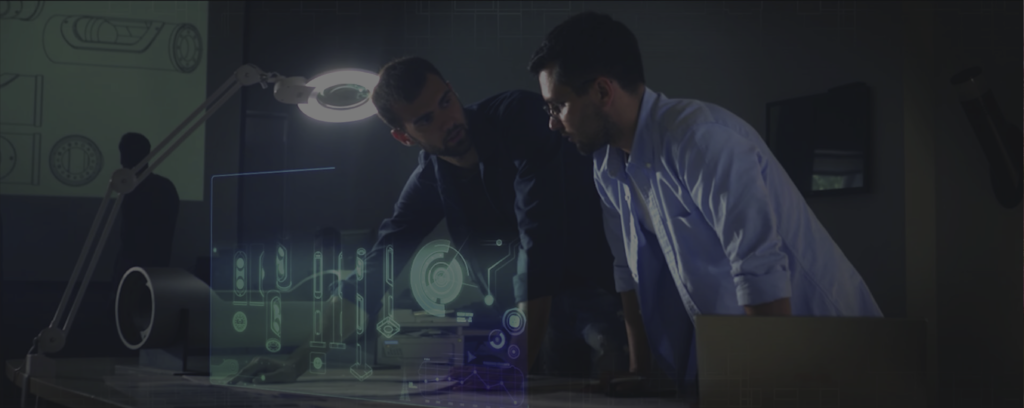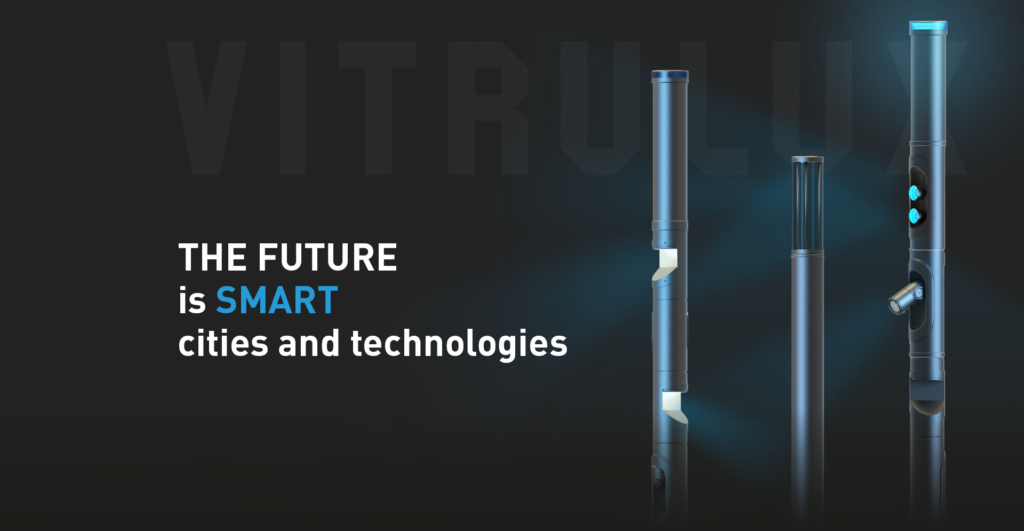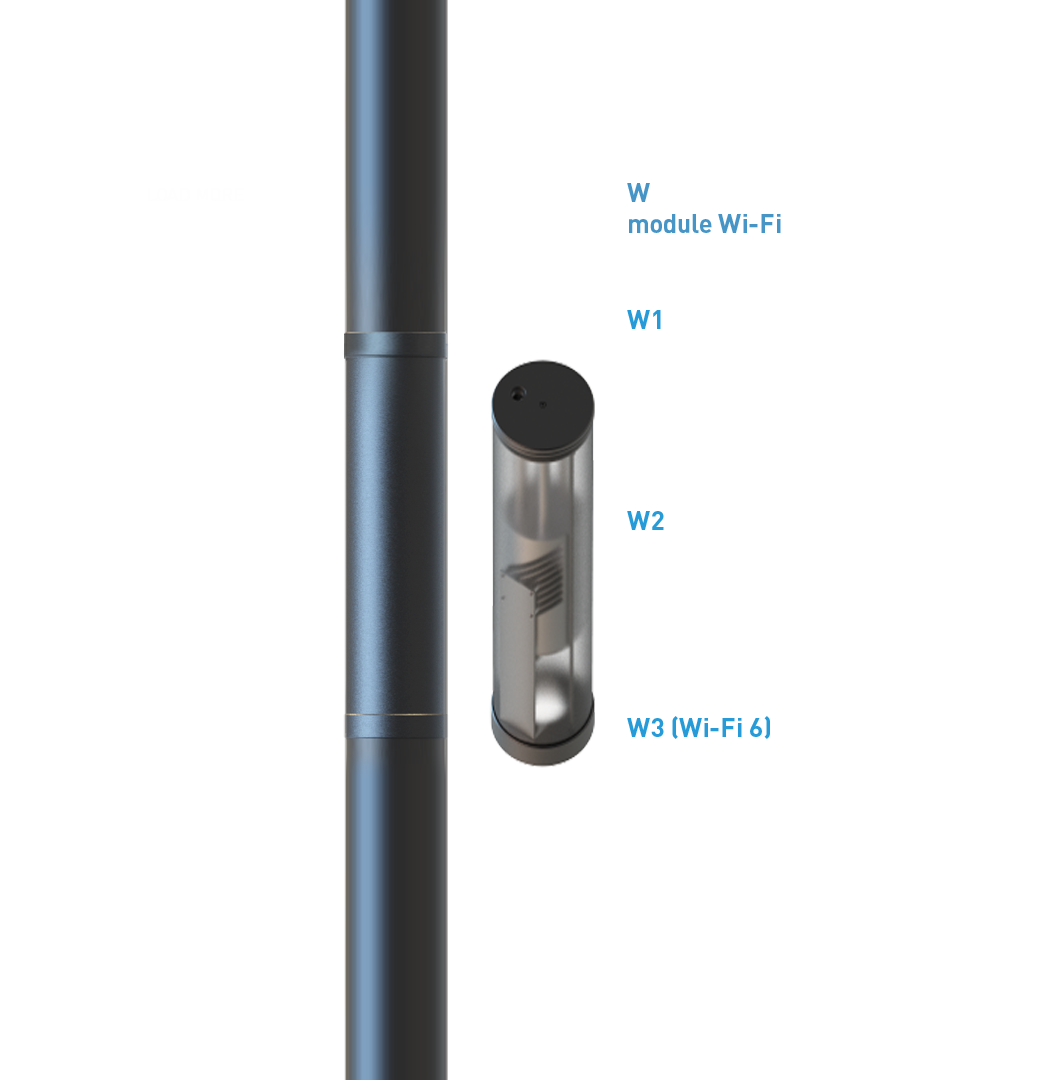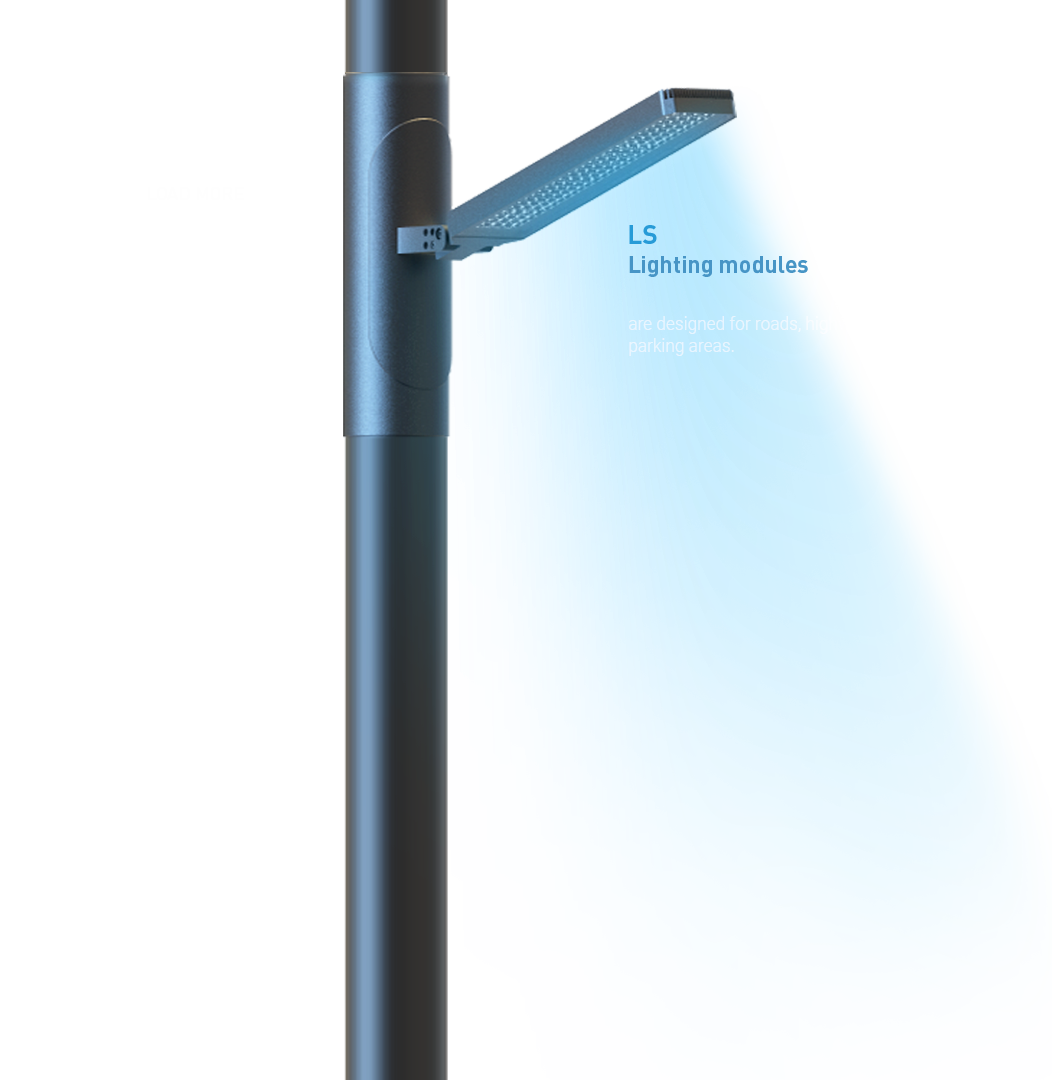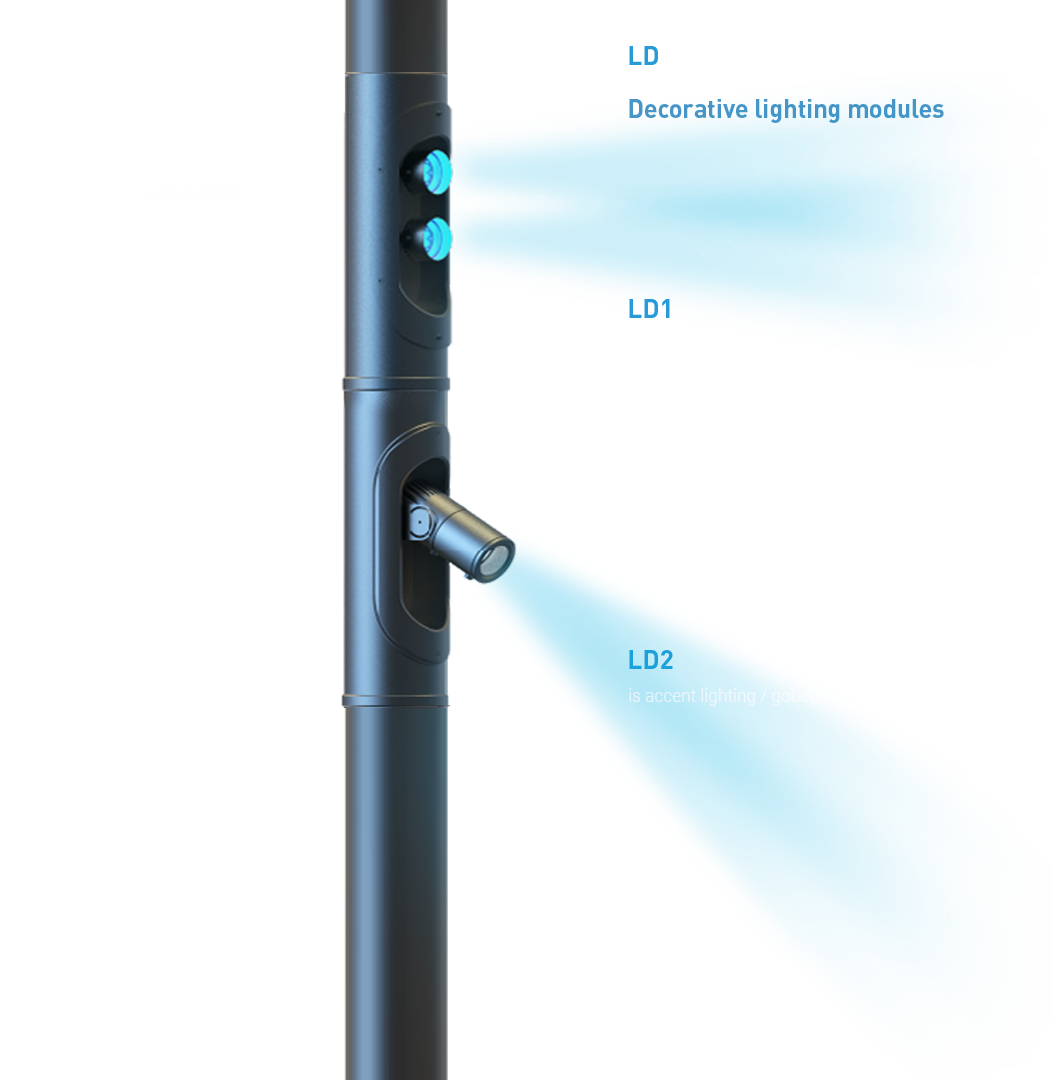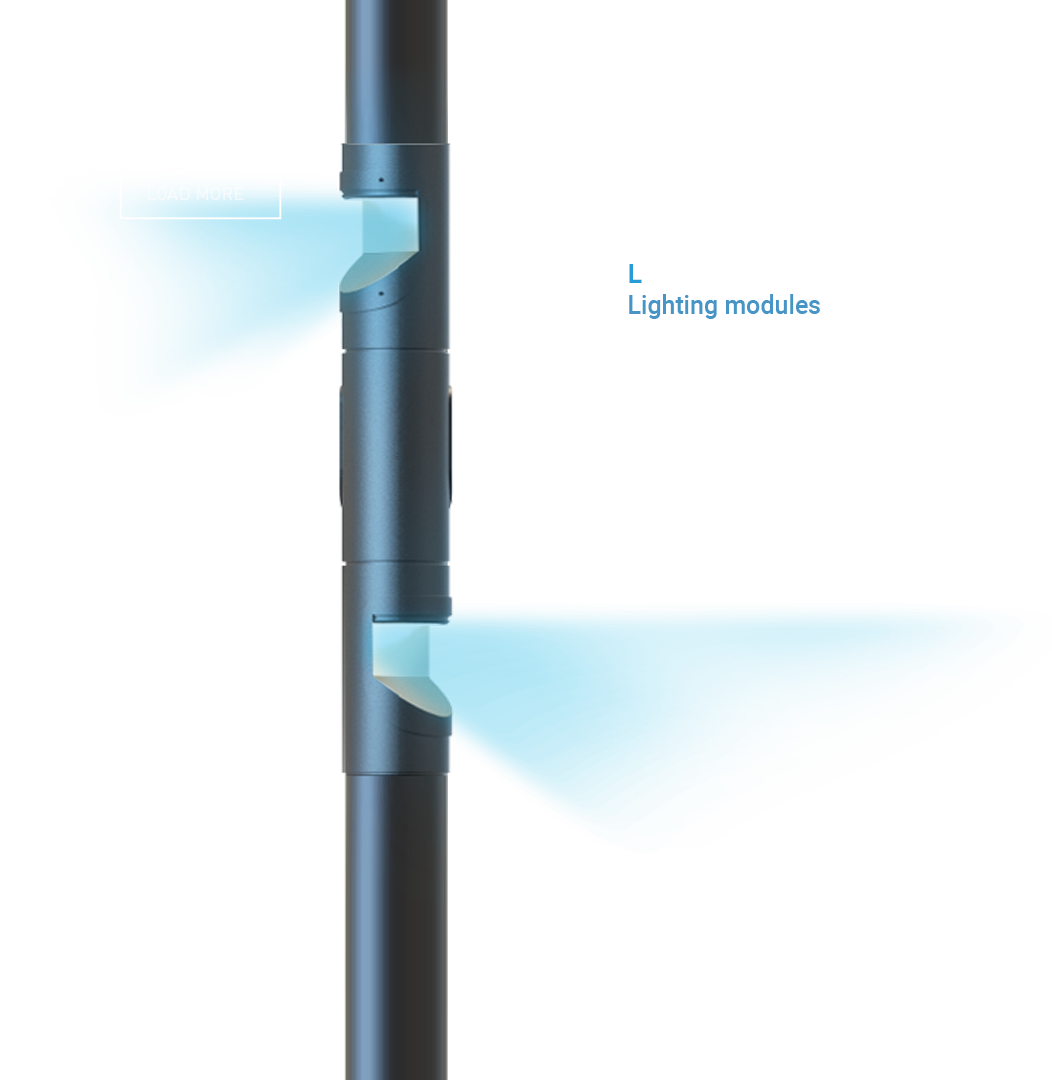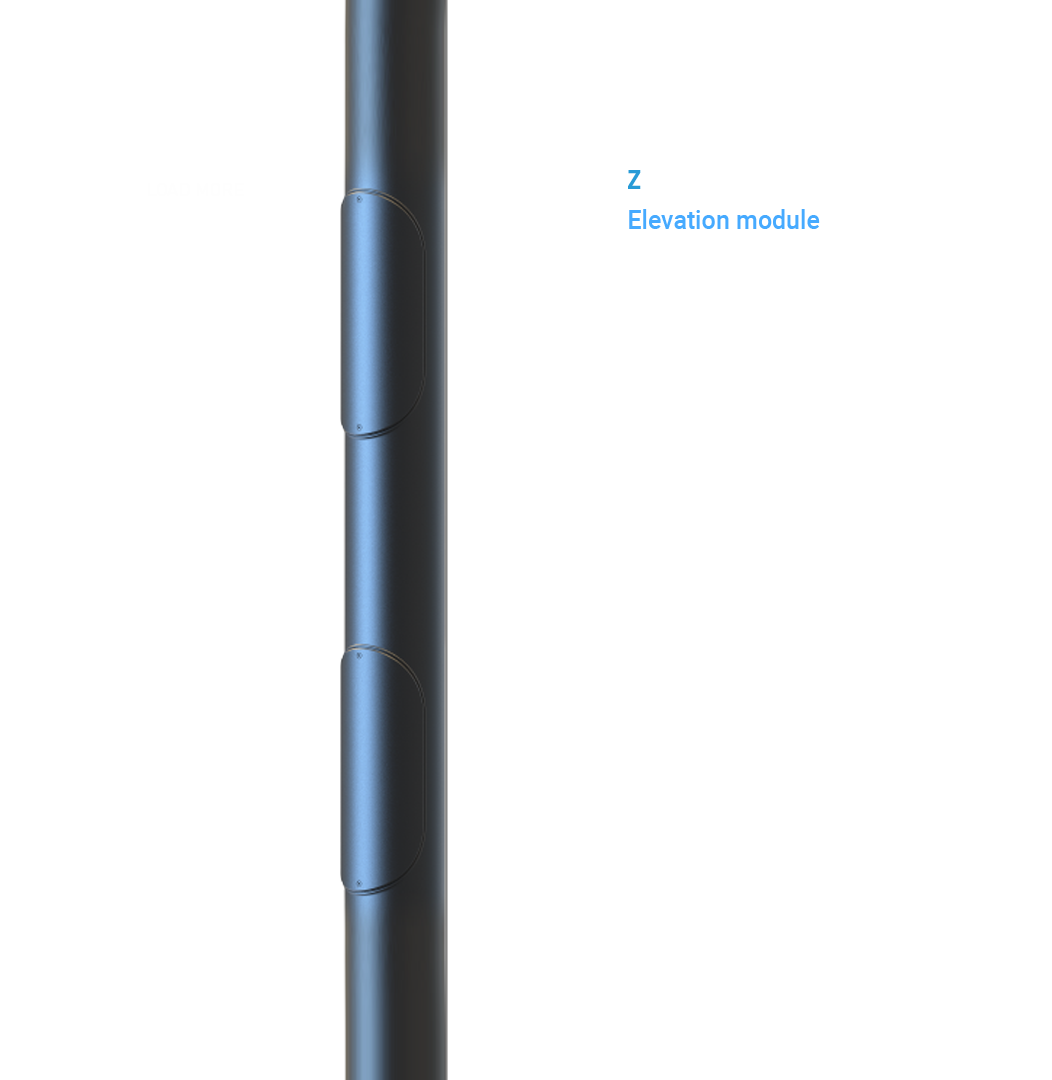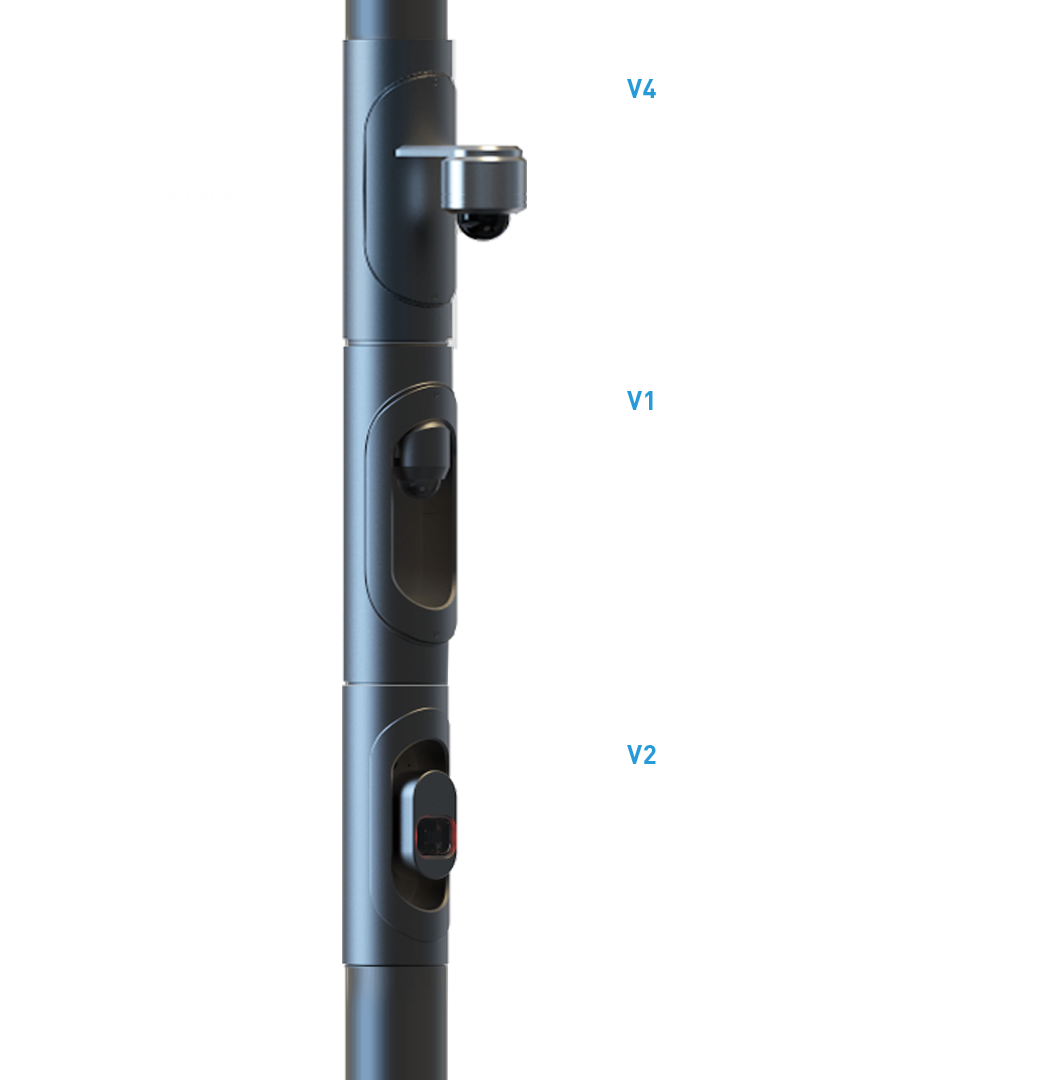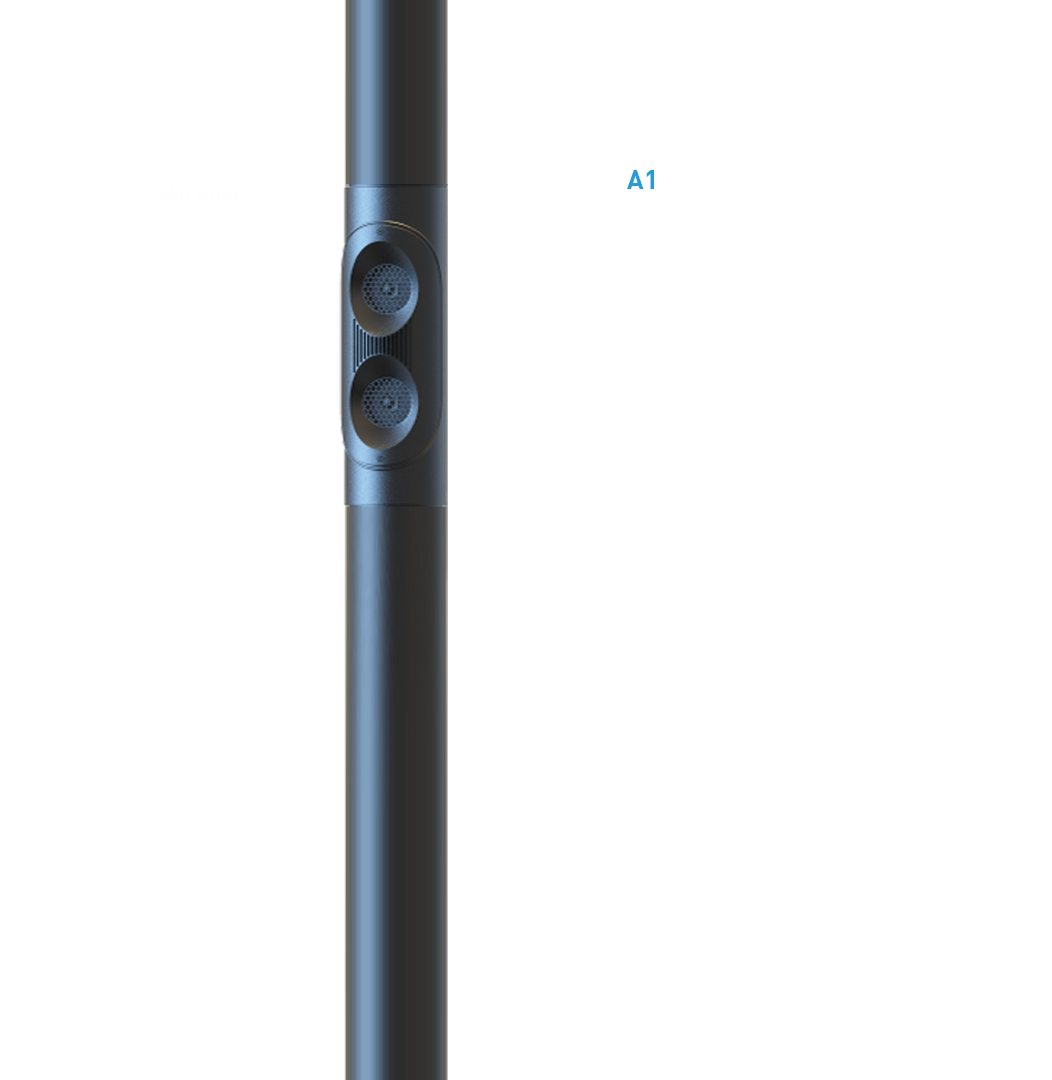SMARTCITIES
Every modern city dweller is surrounded by multiple services that have become common as air. As the new technologies are getting more accessible and affordable, they bring the necessary infrastructure to our streets, back yards, and parks. What will it be like? What changes are coming to our yards, our cities, and our planet in the near future?
We are propelling new ideas, bringing the future closer, integrating the nerve ends of the city organism into its architectural landscape. The service space becomes denser, and at the same time more invisible and human-friendly.
Welcome The Smart Pole!

SMARTCITY
What is

The city that’s BRIGHT
The care for the environmental policy with reduction of pollution and carbon footprint requires the lighting systems to become intellectual, technologically advanced, and energy efficient.
The city with the established
Modern digital infrastructure, designed to meet the existing and future requirements, succinctly fit into the city’s architectural shape, operating for the city growth and people’s benefit.
The city where it’s comfortable to
— communicate and socialize;
— feel safe about your life and health;
— enjoy the atmosphere and the aesthetics of the ambience.
Law & security enforcement;
Civil information & alarm system;
Emergency services call availability;
Urban systems monitoring;
Video surveillance & analytics;
Wireless network access;
Energy efficiency & manageability;
Environmental monitoring;
Attractive & fittable design;
SmartCity Construction Principles
01.
unified design concept Approved by the Committee of Urban Planning and Architecture.
Smart Poles are long term architectural objects which will become members of the “architectural family” of the neighborhood for decades.


02.
building a multilevel infrastructure with room for growth and modernization.
Layered design with implementation of BIM technology allows to avoid intersection and duplication of engineering systems, correct calculation of capacity and bearing capabilities, and plan enough room for development, which is particularly relevant in situations with extensive excavation work and further landscaping of the territory.
03.
unification and scalability while building multi-level infrastructure.
Unification of typical elements, hardware units, and infrastructural requirements, cluster construction principal utilizing Smart Poles as data control and processing centers allows to scale, alter, and add systems with no risk of overloading and loss of control.

03.1
Major highways
— dense road traffic flows;
— plazas, large intersections;
Low Smart Poles density; High load per pole; Large data flow; Bright lighting requirement;
Pole height: up to 15 metersNumber of modules: starting at 8
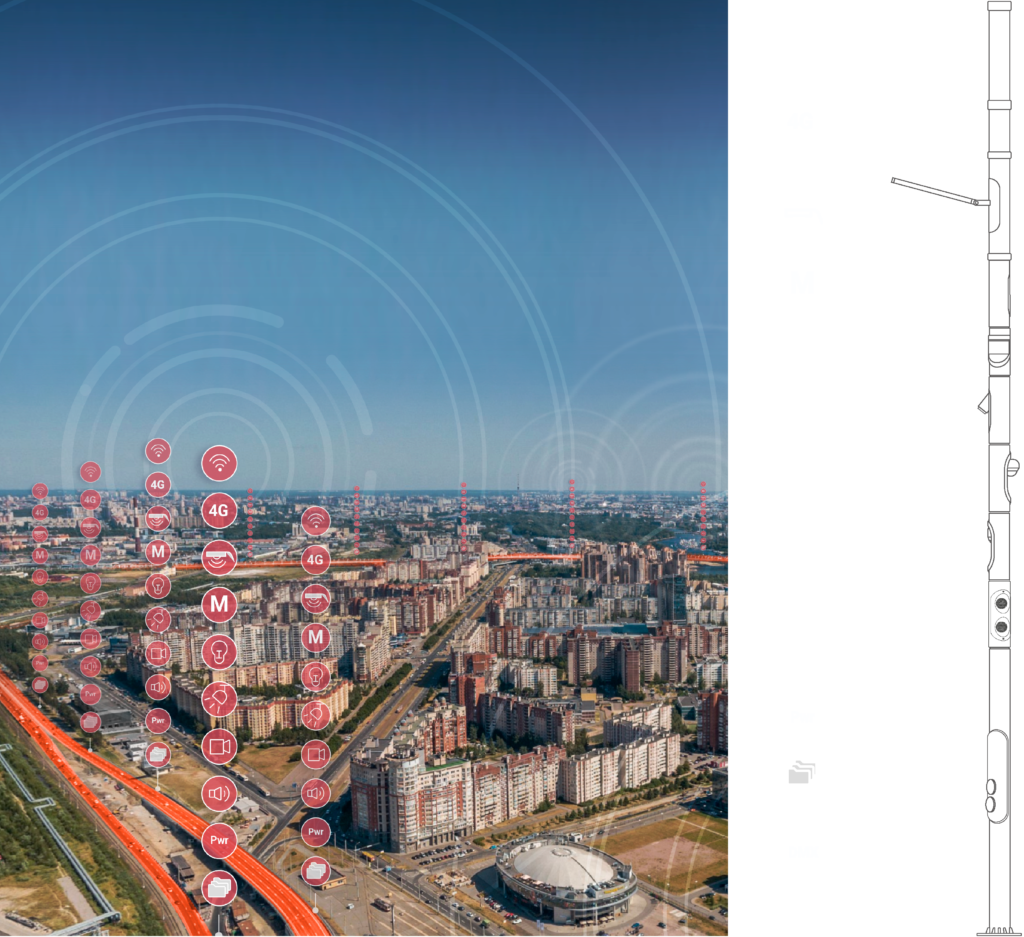
03.2
Secondary streets
— High volume of pedestrian traffic;
— Abundance of intersections;
High concentration of services; High Smart Pole density; High dynamics of data flow;
Pole height: 8-9 metersNumber of modules: 4-6
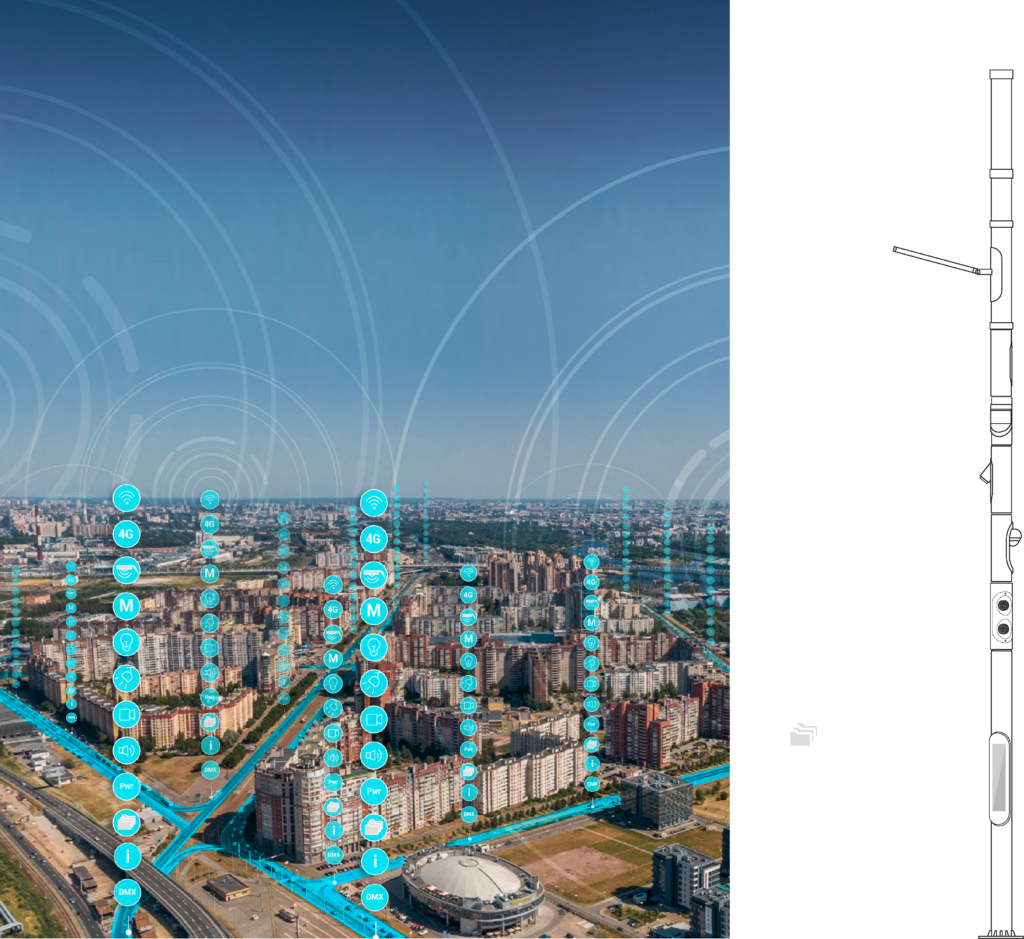
03.3
Yards and Parks
— small territories;
— now traffic density;
Distributed lighting systems; Low quantity and density of services; Mostly static field;
Pole height: up to 6 meters
Number of modules: 2-4
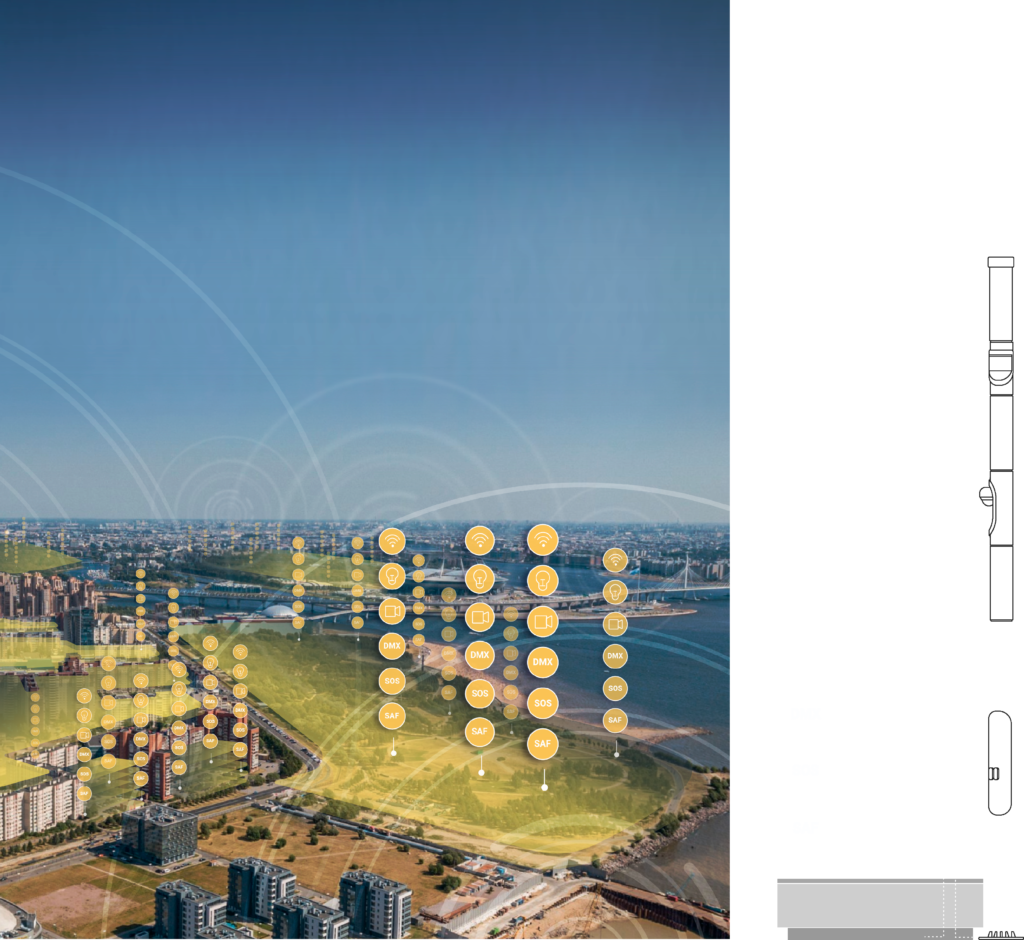
04.
open architecture and modular system structure.
Modular structure principal provides the Smart Pole system with unique flexibility of functionality choice. The possibility of equipment integration from practically any manufacturer allows users to utilize the equipment they are familiar with.
The majority of functional modules have unified placement constructions, which allows interchanging and increasing functionality as needed.
Module parts can be rotated to a desired angle without disassembling the pole.

